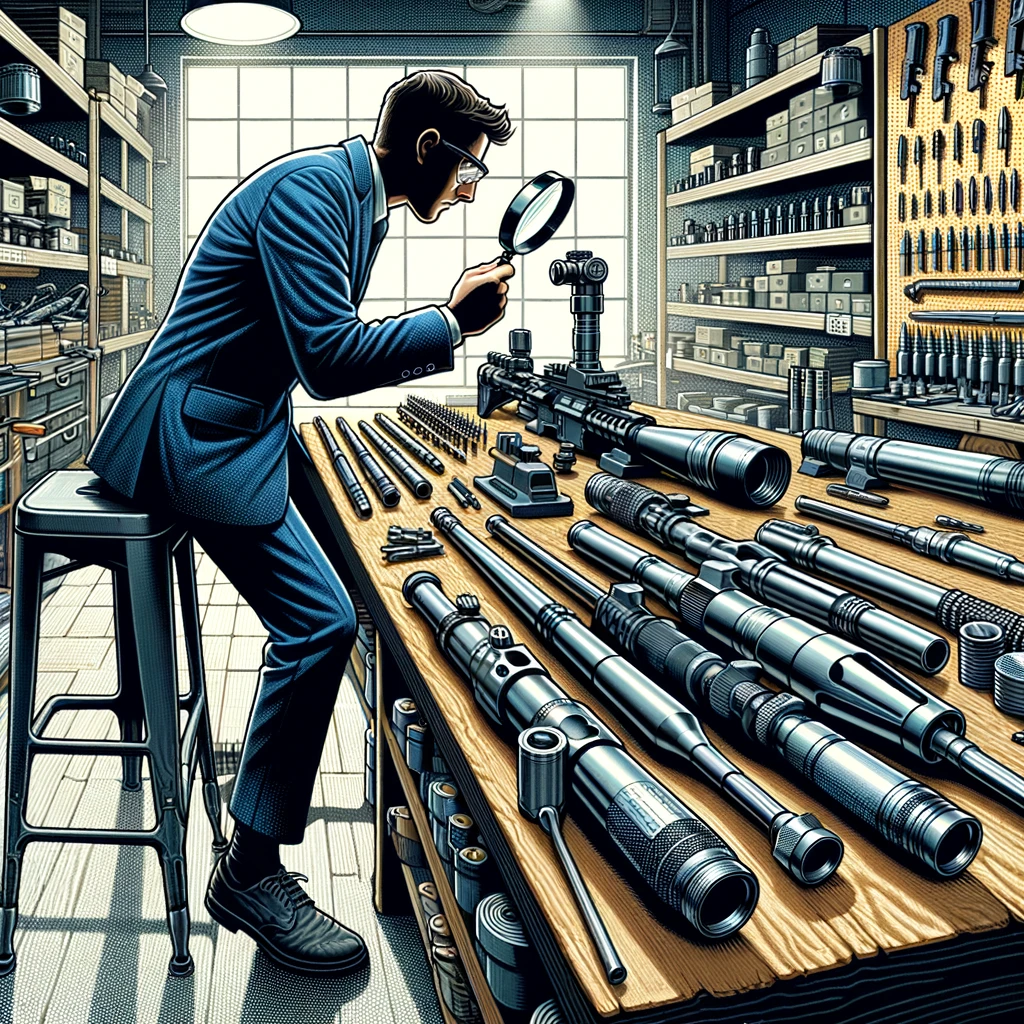- M-LOK Handguards
- M-LOK Accessories
- KeyMod Accessories
- Barrels
- Bolt Carrier Groups
- Charging Handles
- Complete Kits
- Gas Blocks
- Gas Tubes
- Iron Sights
- Lower Parts
- Mags
- Muzzle Devices
- Pistol Stock Sets
- Pistol Grips
- Pistol Accessories
- Slings
- Stock Components
- Stocks
- Stock Sets
- Stock Sets With Matching Upper
- Tools
- Upper Kits
- Upper Parts
- Upper Receivers
- Upper Sets
- Vertical Grips
Advanced Barrel Selection: Finding the Right Fit for Your AR

To Choosing the right barrel for your AR-style rifle is crucial for optimizing performance, accuracy, and handling characteristics. Whether you’re a competitive shooter, hunter, or tactical operator, understanding the nuances of barrel selection can significantly impact your shooting experience.
This article will guide you through the essential factors to consider when selecting a barrel for your AR, ensuring you find the perfect fit for your specific needs.
Material Matters: Steel Types and Coatings
The material and finish of a barrel play a pivotal role in its durability and performance. The most common materials used for AR barrels are stainless steel and chrome-molybdenum (chrome-moly) steel.
Stainless steel barrels, known for accuracy, are preferred for precision shooting. Chrome-moly barrels, with treated interiors, offer durability and corrosion resistance, ideal for high-volume shooting and harsh conditions.
Coatings like nitriding, Parkerizing, and chrome lining improve barrel hardness, corrosion resistance, and maintenance ease.
Each treatment offers benefits; nitriding enhances surface hardness and corrosion resistance without the accuracy reduction linked to chrome lining.
Length and Twist Rate: Balancing Velocity and Stability
Barrel length affects AR velocity and maneuverability; longer barrels boost velocity and long-distance accuracy, ideal for competition and hunting.
Shorter barrels enhance maneuverability, preferred for tactical and home defense; ideal length balances use with valued performance traits.
The twist rate, the speed of barrel rifling spin, stabilizes bullets; faster rates (1 in 7) suit heavier bullets, slower (1 in 9) for lighter ones. Selecting the appropriate twist rate for the bullet weight you plan to use is essential for achieving optimal accuracy.
Profile and Weight: Finding the Balance
Also, the barrel profile refers to the shape and thickness of the barrel and impacts the rifle’s weight, balance, and heat dissipation.
Heavy or bull barrels offer excellent accuracy and heat resistance, making them ideal for precision shooting where rapid follow-up shots are less critical.
Lighter profiles like government or pencil barrels offer easier handling, benefiting mobility-critical situations like hunting or tactical use.
Gas System Length: Ensuring Reliable Cycling
The length of the gas system affects the rifle’s recoil and cycling reliability. AR barrels typically feature one of four gas system lengths: pistol, carbine, mid-length, or rifle.
Shorter gas systems, like the pistol and carbine, offer faster cycling rates, which can be advantageous in close-quarters combat but may result in sharper recoil.
Mid-length and rifle gas systems provide smoother operation and reduced recoil, making them more comfortable for sustained shooting.
Conclusion
Therefore, selecting the right barrel for your AR involves a careful consideration of material and finish, length and twist rate, profile, and gas system length.
By understanding how each of these factors influences your rifle’s performance, you can make an informed decision that enhances your shooting experience.
Whether your focus is on precision, durability, or maneuverability, the perfect barrel is out there to meet your needs. Remember, the ultimate goal is finding the right balance that fits your specific shooting style and requirements.
